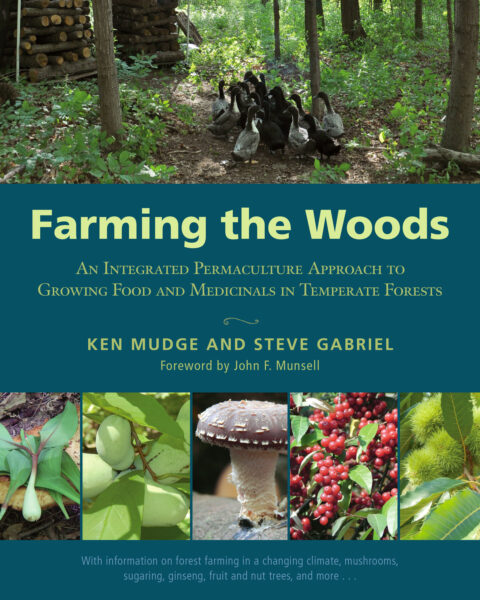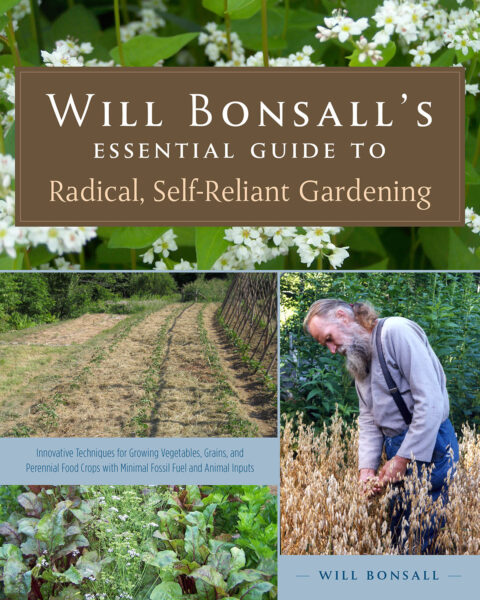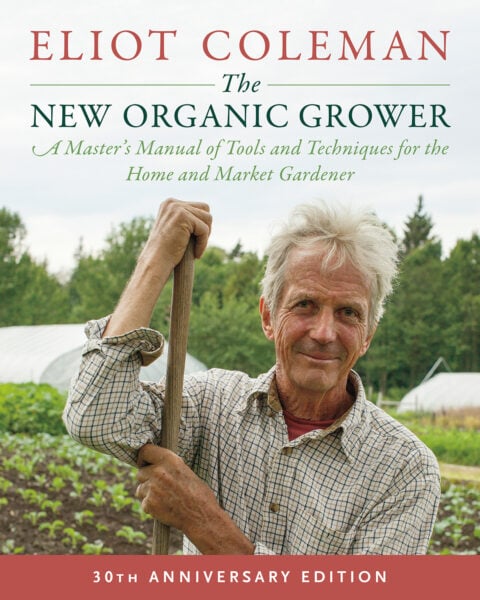Watering Your Plants: How Important Is It?
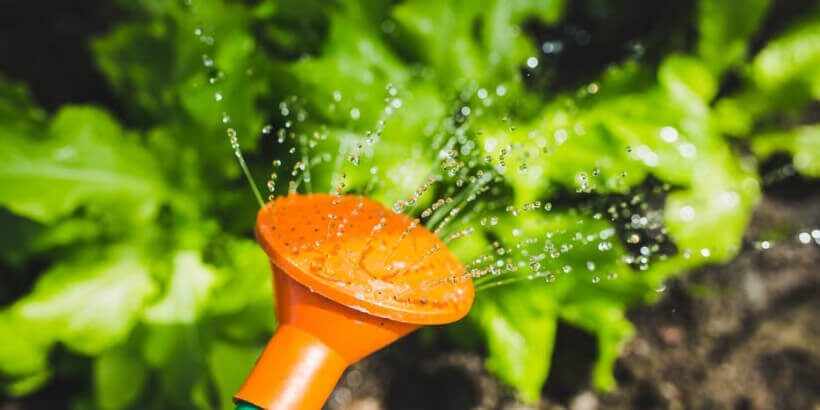
There’s an old saying: water, water everywhere, and not a drop to drink. But now with climate change, make that: water, water rapidly disappearing, and more and more gardens popping up that need watering.
A terrible rhyme, but a paradox for sure; with the increase of local and small family food production, comes a bigger need for water—but water is a precious resource.
The following is an excerpt from Solar Gardening: Growing Vegetables Year-Round the American Intensive Way by Leandre Poisson and Gretchen Vogel Poisson. It has been adapted for the Web.
Mention watering, and the first thing we think of is how we can garden so that we don’t have to water. If a garden’s soil is rich with humus, the decomposing organic matter will absorb water like a sponge and hold in the moisture, making it available to growing plants. Mulching also makes for moist soil, because it prevents the evaporation of water from the ground’s surface. That’s why, in American Intensive Gardening, we grow plants close together to form a living mulch. Just like a miniature rainforest, the canopy of leaves shades the soil, keeping it cooler and reducing moisture loss through evaporation.
Recently we came across some old gardening notes that indicated that in 1978 we had had to water our garden for the first time in its nine-year history. In fact, until the past few years watering has never been a consistent part of our gardening activities. We might have watered seedbeds or seedlings, but we rarely found it necessary to provide additional water for growing plants. But our climate seems to have changed so much in recent years that we now begin watering in May and continue through the course of the summer. In addition, the lack of snow cover in our area over the past few winters has given us spring seasons with little surface moisture. This new need to water has helped us empathize with gardeners who live in arid regions of the country. We have learned, much to our dismay, just how time-consuming watering a garden can be.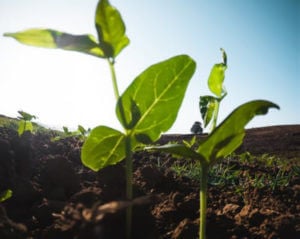
Transplants and newly seeded areas most always require some watering. Growing plants need consistent moisture, no extremes of too-wet or too dry conditions. By observing your garden closely, it should be clear to you when you have to water. If leaves begin to wilt, if broccoli and cauliflower plants form buds while they are still immature, or if the soil feels and looks dry more than an inch below the surface, the garden wants either watering or a good soaking rain very soon.
Observing the weather can also provide important clues as to when you should water. In our area, if we receive anywhere from one-half to one inch of rain during the week, we generally don’t need to water. An un-mulched garden, though, or one that has a sandy, fast-draining subsoil might demand supplementary watering, even with adequate weekly rainfall.
Different gardeners will develop their own favorite systems for watering, based on the equipment available to them and how frequently they need to water to keep the subsurface soil moist. There are, however, some general guidelines for when and how to water. In humid areas of the country, the best time to water is early in the morning, to allow the surface soil to dry out during the day and discourage fungus problems. In arid regions evening watering is preferable to decrease the amount of evaporation. With soil whose structure is predominantly clay, water will take a long time to penetrate, so a slow-drip system of irrigation in this case is a good option. With sandy soils you can use a more rapid delivery system, though you still need to water more frequently than on clay soils.
We prefer delivering water to the surface of the soil rather than wetting the leaves of the plants. A powerful spray of water may disturb tender seedlings, and the sun can burn and damage wetted foliage. For irrigating our plants, we like to use the so-called soaker hoses made from recycled materials, which are available from most garden supply stores. We also own a few drip irrigation hoses. If we do water with a regular garden hose, we use a wand attachment and move it around the base of the plants. For applying solutions of liquid fish emulsion fertilizer or manure tea (see page 104 for our recipe), we recommend using a metal watering can and irrigating around the base of the plants.
…Many years ago we observed a community garden where everyone assumed that he or she had to water every night. It was the classic case of, if a little is good, a lot will be that much better. Instead of helping the plants, though, this constant watering actually leached nutrients out of the soil, and the garden got worse and worse. By the end of the season, this extreme over-irrigation had utterly destroyed the structure, or tilth, of the soil.
Recommended Reads
Get a Jump on the Planting Season: Build Your Own Cold Frame
Recent Articles
Garlic mustard: while known as “invasive,” this plant can be consumed in its entirety and has great nutritional value. Plus, the garlic-flavor is a perfect addition to any recipe that calls for mustard! The following are excerpts from Beyond the War on Invasive Species by Tao Orion and The Wild Wisdom of Weeds by Katrina…
Read MoreEveryone loves a refreshing, fermented, nutritious drink…even your garden! Take your fermentation skills out of the kitchen and into the garden by brewing fermented plant juice. The following is an excerpt from The Regenerative Grower’s Guide to Garden Amendments by Nigel Palmer. It has been adapted for the web. How to Make Fermented Plant Juice Fermented…
Read MoreWant to see your crops thrive this upcoming growing season? The key is in soil fertility and health. Spend time maintaining your soil’s health to guarantee bigger and better crops come harvest time! The following is an excerpt from No-Till Intensive Vegetable Culture by Bryan O’Hara. It has been adapted for the web. What Is Soil Fertility?…
Read MoreMany know the effects of catnip on our feline friends, but few realize that catnip has medicinal effects for humans. From stomach aches to reducing fevers, catnip is a versatile herb with many benefits. The next time you grow this plant for your cat you may end up taking a few cuttings for yourself! The…
Read MoreIt’s time to take control of your seeds and become a plant breeder! Saving your seed allows you to grow and best traditional & regional varieties, and develop more of your own. The following excerpt is from Breed Your Own Vegetable Varieties by Carol Deppe. It has been adapted for the web. Becoming A Plant…
Read More

